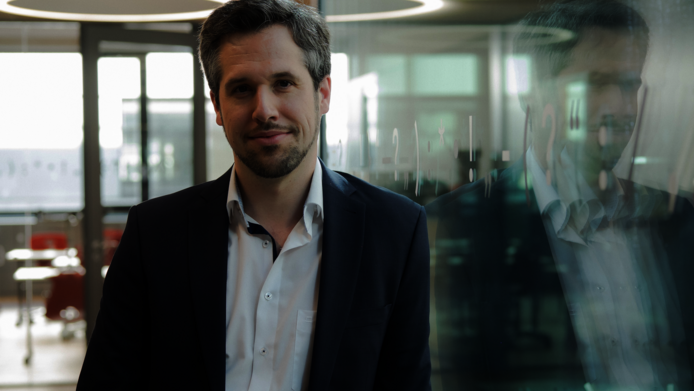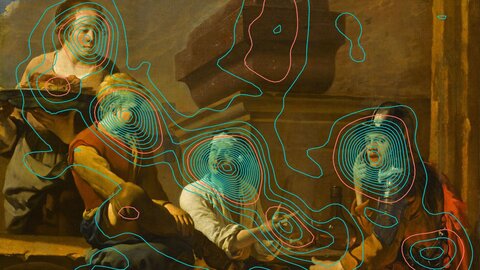Dangerous mix of facts and fiction

The public statements by the German pulmonary specialist Wolfgang Wodarg, who felt that the measures against the new coronavirus Sars-CoV-2 were panic-mongering, and their rapid dissemination in the social networks have caused quite a stir. The events clearly show the core problems around conspiracy theories that have sprung from the corona crisis: the supposed trustworthiness of sources, the mixing of fact and fiction and the possibility of putting well-proven knowledge into a new context. FWF: Mr. Oberhauser: as a historian, how do you see this? Claus Oberhauser: This is indeed a great danger in the context of the corona crisis. Today, we are confronted by a mixture of facts and fiction, trustworthy and untrustworthy information - and by frequent attempts to validate the dubious by quoting scientists or doctors. Wodarg is a perfect case in point: the ex-journalist and conspiracy theorist Eva Herman (e.g. Das Medienkartell, Die Wahrheit und ihr Preis) conducted an interview with him that spread rapidly on Youtube. It’s not easy to deal with that. In Austria, Mimikama – an association dedicated to fact-checking and informing the public about misinformation on the Internet – provides very important services in this respect. This association keeps an eye on fake news that is circulating – and they have also made mention of Wodarg. FWF: How can you possibly find your way through this thicket? Oberhauser: It’s a fact that an enormous number of scientists around the world are working intensively on the coronavirus and that there are still many questions that have not yet been answered. Conspiracy theorists claim that they already have the answers. In addition, they are quite deliberately seeking public attention. Serious researchers usually discuss results first among a group of experts.
FWF: Are the corona conspiracy theories “different” from a historian’s perspective? Oberhauser: According to the American political scientist Michael Barkun, we are dealing here with so-called “super conspiracy theories”. These can involve and mix all kinds of ideological content. Other main components are secret societies, large companies or groups. The corona conspiracy theories we know fall very much into this category. We are currently observing an unprecedented change: as recently as February, we were still assuming that there was almost always a political strategy behind contemporary conspiracy theories. This is why our research focus was on the question of how populists use conspiracy theories. In the case of corona conspiracy theories, this connection is no longer valid. However, it remains to be seen how restrictive government measures will affect conspiratorial ideas. FWF: How exactly do these super conspiracy theories differ from other categories? Oberhauser: The common definition for conspiracy theories is very vague. Basically, it only denotes the attempt to explain something, an event for instance, with a conspiracy. This vagueness is also its greatest “strength”. Anybody can subscribe to a conspiracy theory and they can be applied to almost any event. Basically we distinguish between two tracks: conspiracy theories in the sense of a grand narrative and iconic conspiracy theories involving images and symbols as a central element, with conspiracists seeing lots of things in these symbols. The latter are strongly represented at present. On video portals such as Youtube or other social media channels, images of hand signals are circulating. One well-known example is the “Merkel diamond” which the German Chancellor Angela Merkel uses. The hand gesture triggered many speculations about its meaning. Nowadays, the grand narrative mixes with the pictorial code. FWF: Isn't it rather difficult in the case of the corona pandemic to use a grand narrative, which has as a central element a specific group and a secret that needs to be uncovered? Oberhauser: The coronavirus affects the whole world. It's an unprecedented constellation. In the past, the spread of diseases was sometimes interpreted as an outgrowth of capitalism and was forcibly made to fit various ideologies. These conventional patterns of explanation are not applicable now. Much will depend on how the Chinese government goes public with information. The more fraught with uncertainties official news is, the more likely it becomes that conspiracy theories will be used to offer an explanation that makes sense to the conspiracists.
FWF: The collective enemy is a virus So what are conspiracy theories directed against right now? Oberhauser: Currently, we see a turnaround. Conspiracy theories are now dealing more with the state as a security system, the discipline it imposes on people, including even close surveillance, and the question of whether all this will be rescinded after the pandemic. Conspiracy theorists speculate that the coronavirus is an “invention” of the nation-state to impose cyber-control on the population. All in all, it is difficult to identify target enemy groups. That said, the US President Donald Trump calls it the “Wuhan virus”, the Chinese government stresses that the virus was imported, and in Europe there has been some talk of the “Italian virus”. FWF: Are conspiracy theories to be understood as a reaction to something inexplicable? Oberhauser: In Europe, conspiracy theories played an important role in the Age of Enlightenment. Conservative elites, in particular, reacted to change with conspiracy theories. One example is the Protestant theologian and writer Johann August Freiherr von Starck, who was at the centre of a small but illustrious group of renowned experts. The conspiracy theories about the involvement of the Illuminati orders in the French Revolution can be traced back to this group. This was a deliberate attempt to showcase their own expertise and put the blame for something on other people. FWF: Do conspiracy theories change as they are disseminated? Oberhauser: Yes, they do. We know this from the Masonic conspiracy theories which have their roots in Western Europe in the 18th century. They then spread to the USA, where they took a different turn, not least because US President George Washington was a freemason. In Europe people tended to regard freemasons as forces involved in the French Revolution, but in the USA they were considered to be part of an elitist or state discourse. FWF: Will the corona pandemic change researchers' view of conspiracy theories? Oberhauser: While this used to be seen as a disreputable marginal topic in the past, things are now changing noticeably. More and more researchers are realizing that conspiracy theories per se are an interdisciplinary research topic. This is why I joined the COST action "Comparative Analysis of Conspiracy Theories" in the course of my last FWF project. This gave rise to a Europe-wide, interdisciplinary network (www.conspiracytheories.eu) of researchers working on conspiracy theories. In March this year, we published a comprehensive handbook on conspiracy theories, and we have also developed material for schools. FWF: These teaching materials contain a great deal of historical information. Are there historical parallels to other pandemics? Oberhauser: Conspiracy theories run through the history of humankind. They shift the blame for an event, a crisis or certain changes on someone who is not part of the respective community. When the plague ravaged Europe in the 14th century, there was a multitude of conspiracy theories which put the blame on the Jewish population. Violent riots were often the result. Other examples are the HIV virus and the Ebola virus. The underlying factor here is the primordial fear of disease. It is also striking that these conspiracy theories often bring scientists into disrepute and frequently revolve around failed experiments or secret experiments commissioned by the state or a corporate conglomerate.
FWF: In addition, practically anyone can spread rumours via social media today. How do you see this in the historical perspective? Oberhauser: In the past, conspiracy theories spread mainly through novels, polemical writings and newspapers. However, they were more of a discourse among the elite and constituted the normal state of affairs in the world of politics. It was only much later that conspiracy theories were stigmatized. Nowadays, social media are open to all social strata. Another new aspect is the high degree of interconnectedness and the speed of dissemination. Conspiracy theorists can use social media to deliver a great deal of content and apply it to all events. The German sociologist Max Weber speaks of the disenchantment of the world as a result of a positivist approach to science. Conspiracy theories represent an enchantment of the disenchantment, and their protagonists are playing a game of "I spy, with my little eye ... “ FWF: Is it really possible to distinguish between conspiracy theory, genuine conspiracy, populism and investigative exposure? Oberhauser: A genuine conspiracy involves only a few people with a clear goal. The more people who are in the know, the more likely it is that the plan will become public and thereby risk failure. Populism is geared to a conspiracy-theory mindset, and both are very similar in nature. It is extremely difficult to distinguish between conspiracy theory and exposure. Conspiracy theorists who, like Eva Herman, present themselves as agents of exposure and are involved in the counter-public sphere can be identified by their extreme notions: they are characterized by a serious attempt to oppose the official narrative. FWF: At what point should one start to be alarmed? Oberhauser: Conspiracists are strongly geared to monocausal thinking, and they exhibit three main characteristics. First, nothing is the way it seems – conspiracists do not believe in official reports or narratives. Second, everything is interconnected – they think that someone pulls the strings behind the scenes. And third, nothing is coincidental – they believe there is a conspiracy behind it. Conspiracy theories can also be recognized, by the way, by their enthusiastic use of the term ‘truth’. Right now, for example, when people speak of the truth about the coronavirus FWF: What answer do respectable scientists have to this? Oberhauser: More than ever, they are called upon to disclose their systems of interpretation. Scientific communication should also provide a lot more information about what researchers do, and a failure to do so will result in a lot of distrust. In a recent study, for example, a large number of researchers have investigated – and refuted – the rumour that the new coronavirus might have originated in the laboratory. Such findings should be much more strongly publicized. As a media consumer, on the other hand, one should ask oneself this question: would serious-minded researchers share unsubstantiated findings via WhatsApp right now, of all times?
Claus Oberhauser is head of the Institute for Research and Development in Didactics and Educational Science at the Pedagogical University of Tyrol. A historian and expert in the didactics of history, Oberhauser also researches and teaches at the University of Innsbruck. He formerly held a teaching position at an academic secondary school. In addition to conspiracy theories and the history of diplomacy, he focuses on political education and global history.





